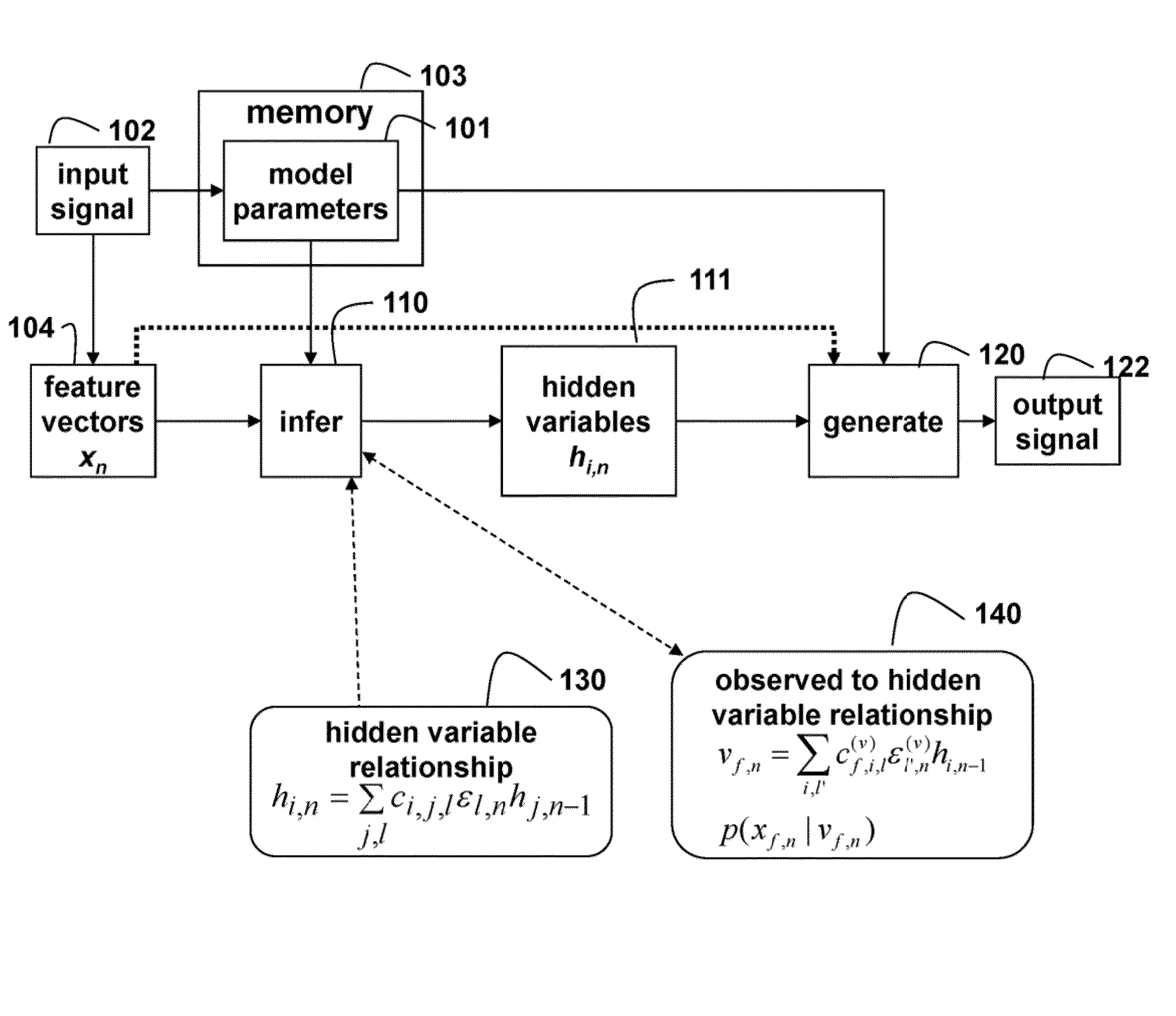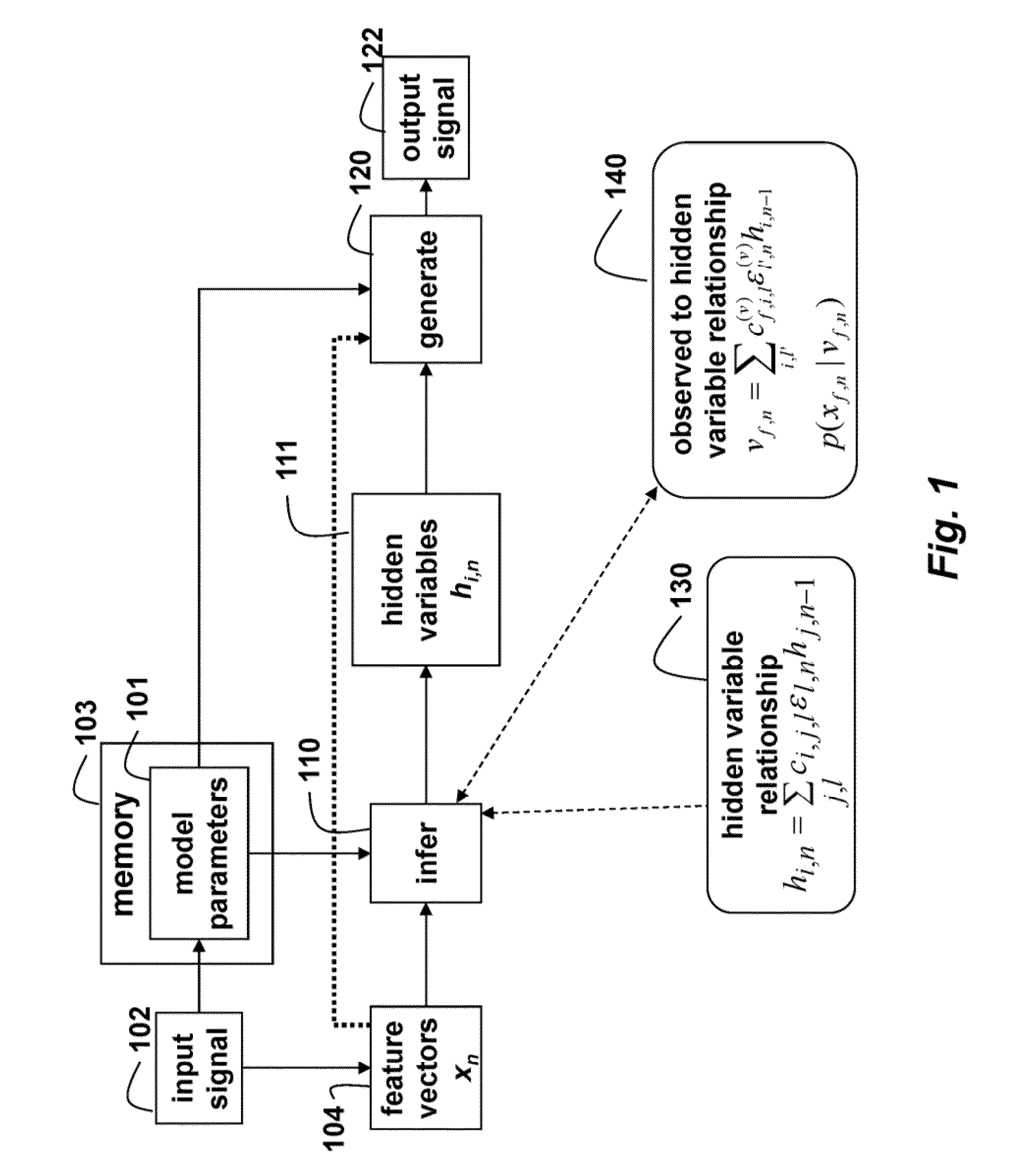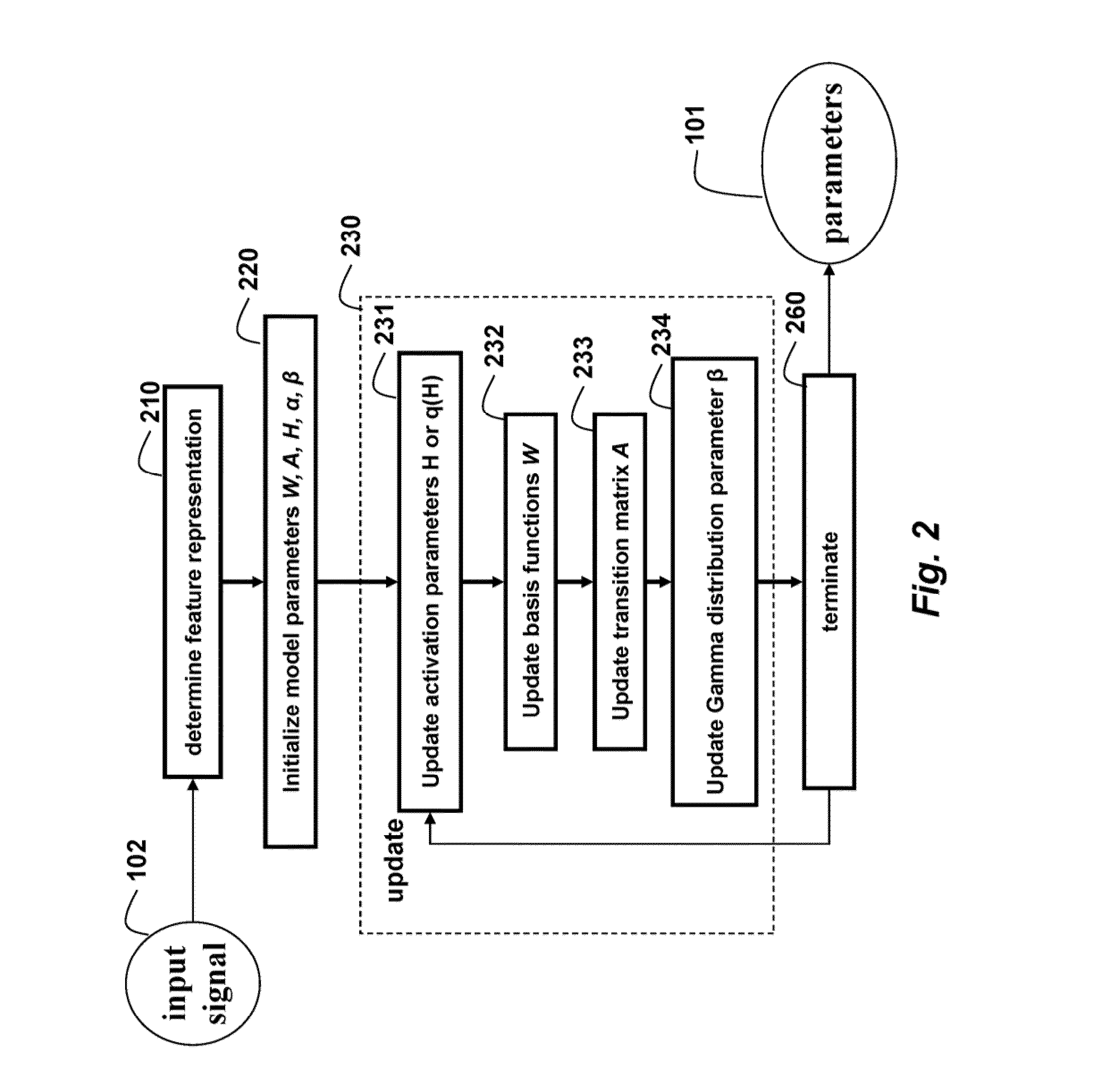Method for Transforming Non-Stationary Signals Using a Dynamic Model
a dynamic model and non-stationary signal technology, applied in the field of signal processing, can solve the problems of complex computational structure, difficult to handle gain adaptation, and complex combinatorial problems, and achieve the effect of improving performan
- Summary
- Abstract
- Description
- Claims
- Application Information
AI Technical Summary
Benefits of technology
Problems solved by technology
Method used
Image
Examples
Embodiment Construction
Introduction
[0038]The embodiments of our provide a model for transforming and processing dynamic (non-stationary) signal and data that has advantages of HMMs and NMF based models.
[0039]The model is characterized by a continuous non-negative state space. Gain adaptation is automatically handled on-line during inference. Dynamics of the signal are modeled using a linear transition matrix A. The model is a non-negative linear dynamical system with multiplicative non-negative innovation random variables εn. The signal can be a non-stationary linear signal, such as an audio or speech signal, or a multi-dimensional signal. The signal can be expressed in the digital domain as data. The innovation random variable is described in greater detail below.
[0040]The embodiments also provide applications for using the model. Specifically, the model can be used to process an audio signal acquired from several, sources, e.g., the signal is a mixture of speech and noise (or other acoustic interference...
PUM
 Login to View More
Login to View More Abstract
Description
Claims
Application Information
 Login to View More
Login to View More - R&D
- Intellectual Property
- Life Sciences
- Materials
- Tech Scout
- Unparalleled Data Quality
- Higher Quality Content
- 60% Fewer Hallucinations
Browse by: Latest US Patents, China's latest patents, Technical Efficacy Thesaurus, Application Domain, Technology Topic, Popular Technical Reports.
© 2025 PatSnap. All rights reserved.Legal|Privacy policy|Modern Slavery Act Transparency Statement|Sitemap|About US| Contact US: help@patsnap.com



